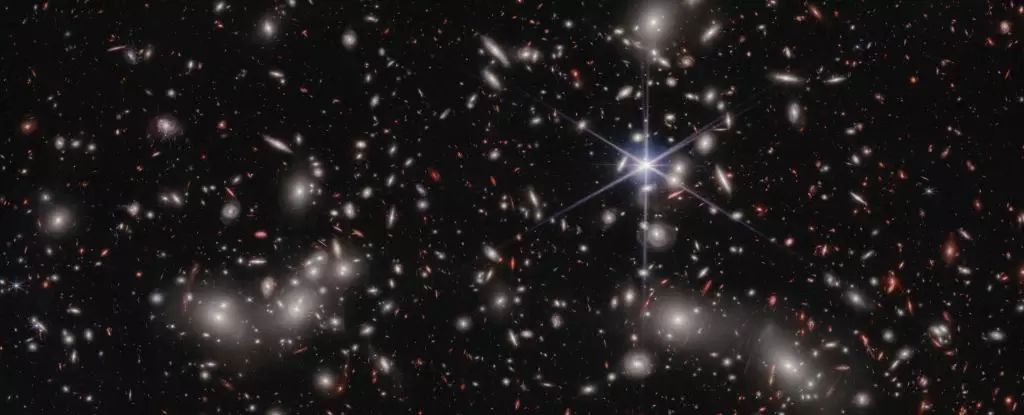Recent advancements in astronomical research have illuminated one of the universe’s most enigmatic epochs: the cosmic dawn. This pivotal period followed the Big Bang, a time when the universe emerged from a dense fog of ionized plasma, shrouding it in darkness. As a result of recent findings from both the Hubble and James Webb Space Telescopes, we are beginning to comprehend the processes that contributed to this fascinating transformation. Insights suggest that much of the light that banished the void came from diminutive dwarf galaxies, a revelation that challenges our previous notions about the universe’s early structure and dynamics.
A remarkable study published in February reveals just how instrumental these ultra-faint dwarf galaxies were in the reionization of the universe. “This discovery unveils the crucial role played by ultra-faint galaxies in the early Universe’s evolution,” stated astrophysicist Iryna Chemerynska from the Institut d’Astrophysique de Paris. The research emphasizes the importance of these low-mass galaxies, which were prolific sources of ionizing photons. During the epoch of reionization, these photons transformed neutral hydrogen into ionized plasma, effectively clearing the fog that once enveloped the cosmos.
This revolutionary perspective shifts our understanding of the baryonic matter in the universe. The early universe was predominantly composed of hydrogen and helium, forming a medium that light struggled to traverse. After the Big Bang, as time passed and the universe expanded, conditions cooled sufficiently for protons and electrons to combine and form neutral hydrogen gas. While initially, there were few light sources to penetrate this medium, the emergence of the first stars brought the energy needed for significant changes. These stars released radiation capable of ionizing hydrogen, leading to a gradual transition from darkness to light—a process some scientists have sought to unravel for decades.
The unveiling of dwarf galaxies’ significance began with meticulous observations of the galaxy cluster Abell 2744. Here, the immense gravitational field of the cluster acts as a cosmic lens, magnifying distant celestial objects. Utilizing data from the James Webb Space Telescope, an international team led by astrophysicist Hakim Atek was able to delve deeper into the characteristics of these faint galaxies. Their findings were impressive: dwarf galaxies not only eclipsed larger galaxy types in numbers—outnumbering them by a staggering factor of 100—but also demonstrated brightness exceeding previous expectations.
The collective energy output of these dwarf galaxies was found to surpass what scientists had typically attributed to their larger counterparts. “These cosmic powerhouses collectively emit more than enough energy to get the job done,” remarked Atek, emphasizing the extraordinary luminosity these small entities possess despite their size. Not only do these discoveries reshape our understanding of the various galaxy types in the early universe, they also underscore the necessity of revisiting assumptions about cosmic reionization processes.
Challenges and Future Directions
While this research marks a significant milestone, it also raises further inquiries. The team has primarily focused on a limited patch of sky, leading astrophysicists to question whether their observed characteristics of dwarf galaxies are representative of a larger cosmic population or merely an anomaly within that specific region. Therefore, researchers plan to extend their studies to observe additional regions impacted by cosmic lensing. Doing so could reveal whether the patterns they identified are consistent across the broader spectrum of the early universe.
The universal implications of dwarf galaxies’ energetic contributions to reionization cannot be overstated. This promising narrative propels scientists into uncharted territory; as Themiya Nanayakkara from Swinburne University of Technology noted, “We have now entered uncharted territory with the JWST.” This sentiment resonates through the entire astronomical community, invigorated by the prospect of unlocking additional secrets of the universe’s infancy.
The revelation that dwarf galaxies may have played a critical role in the universe’s transition from darkness to light adds a complex layer to our understanding of cosmic evolution. Such findings stand to reshape fundamental concepts regarding the formation and behavior of galaxies in the early universe. As ongoing research expands the horizons of our knowledge, we steadily draw closer to deciphering the myriad mysteries of the cosmos—the lights are finally coming on, and the amphitheater of the universe is opening up for further exploration.


Leave a Reply